6+ Sample Restaurant Sales Agreement
-
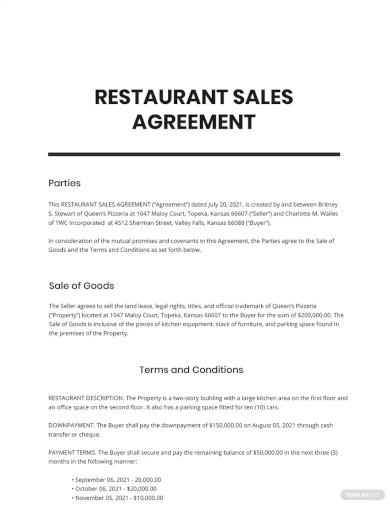
Restaurant Sales Agreement Template
download now -
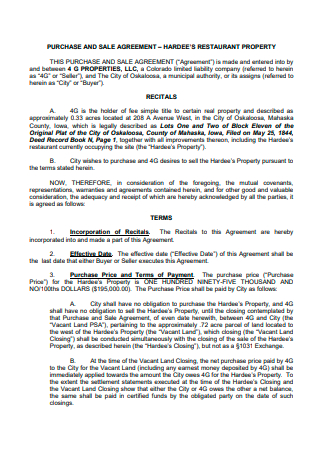
Restaurant Property Purchase and Sale Agreement
download now -
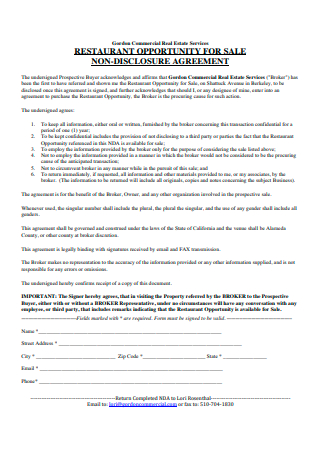
Restaurant Opportunity For Sale Non-Disclosure Agreement
download now -
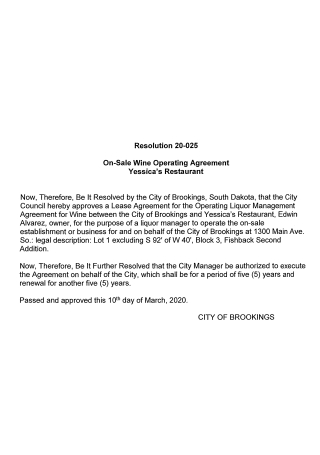
Restaurant on Sale Wine Operating Agreement
download now -
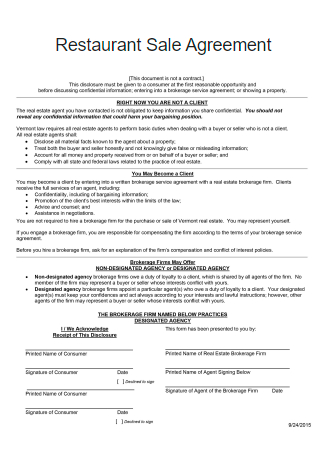
Restaurant Sale Agreement Example
download now -
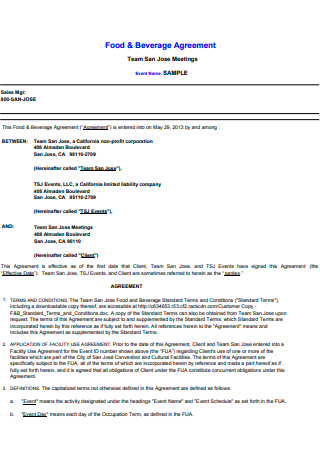
Restaurant Food and Beverage Sale Agreement
download now -
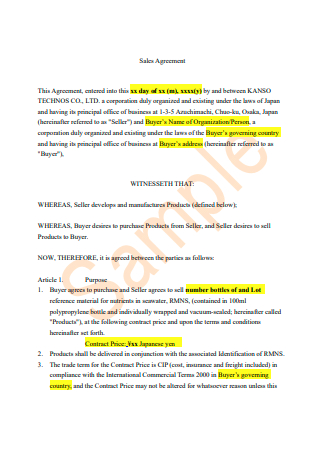
Sample Restaurant Sale Agreement
download now
FREE Restaurant Sales Agreement s to Download
6+ Sample Restaurant Sales Agreement
What Is a Restaurant Sales Agreement?
Profitable Types of Restaurants
Restaurant Startup Costs
How to Write a Restaurant Sales Agreement
FAQs
What happens if a sale agreement expires?
What are the common restaurant startup mistakes?
What is the risk of loss?
What Is a Restaurant Sales Agreement?
A sale and purchase agreement outlines the terms and conditions of a real estate transaction in a legally enforceable contract. The buyer’s specifications, as well as the purchase price, constraints, and contingencies, are all listed. They are usually written by real estate lawyers for the buyer and seller to sign. The document covers the business location, the license to serve specific menu items, the staffing arrangement, commercial cooking equipment, tableware, and other assets that might help with tax planning. You can use the restaurant sale agreement sample prepared within the article to see the layout before you begin writing the restaurant purchase agreement.
Profitable Types of Restaurants
The restaurant business in the United States generated approximately 766 billion dollars in food and drinks sales in 2016, according to Statista. Restaurant owners are continuously growing their respective establishments while also trying to maintain the quality they wish to reach. Since various factors could affect a restaurant, conducting market research and area analysis is important to identify the best type to venture into.
Restaurant Startup Costs
Opening a restaurant entails a unique set of financial considerations. Remember that the average cost of opening a restaurant varies depending on its size, location, and the range of options you’ll have when it comes to the finer points. Before constructing a full-fledged restaurant, some restaurant startup owners tested their concept as a pop-up restaurant. It’s helpful to divide costs into two categories initially, regardless of the type of restaurant you intend to open: one-time costs and recurrent costs. You can view the restaurant purchase agreement sample before proceeding to write the document itself.
How to Write a Restaurant Sales Agreement
Real estate transactions are more complicated than other types of acquisitions, and they might take several weeks to complete. During that time, the buyer, seller, and other third parties will complete the sale through a sequence of events. The following steps will guide you through the process of writing a restaurant purchase and sale agreement. Along with the agreement examples you can use them as additional references.
Step 1: Identify Party Information
Include the seller’s and buyer’s full names, addresses, and contact information. This should include information about the service of the process and the contact information for the officers or agents who will sign the contract for companies. If there are any extra buyers or sellers, make sure to include them. Make sure that you did not leave out any important information to avoid rushed edits and changes.
Step 2: Take into Account the Value
When it comes to how vendors and purchasers are compensated, this is a crucial step and something you need to keep in mind. A business seller or restaurant owner might be compensated in a variety of ways when it comes to a purchase. These compensation mechanisms might be extensive and difficult to understand. Though the common payment method is given through physical cash or notes payable.
Step 3: Define the Price and Payment Information
The price that the customer must pay for the purchase and sales should be included in the agreement for the sale of commodities. This includes the goods’ flat charge or the cost per item specified in the agreement. Any terms or conditions that affect the buying price should be stated clearly. This contains details on who will be responsible for paying taxes on the products and how the buyer will pay.
Step 4: Add Warranties and Indemnities
In most cases, while depending on indemnities, the innocent party is not required to reduce its loss. In general, guarantees protection against the unknown, while indemnities distribute the risk associated with a known responsibility. This is why it is important to state the terms within the agreement so that both parties can fully acknowledge and understand what is entailed for the restaurant sales.
Step 5: Address Potential Breach of Agreement
If there is a dispute about the sales agreement, the contract should state what would happen. This should establish whether the case will be resolved in court, through arbitration, mediation, or some other means. It should also address the contract’s governing law and, if applicable, any venue conditions. Court litigation, arbitration, and mediation are all methods for resolving disputes.
FAQs
What happens if a sale agreement expires?
If the purchaser fails to pay the remainder within the time frame specified above, this agreement will be annulled, null, and void, and the advance payment will not be reimbursed. If this agreement is terminated, the seller is free to sell the scheduled property to any other interested party. Don’t forget to include that as you make use of the restaurant purchase agreement template which may have that section ready for you to edit.
What are the common restaurant startup mistakes?
It’s a poor idea to spend too much money on equipment. It’s normal to want to go all out and buy the most cutting-edge technology, but you must stay within your budget. Make sure you look around for things you might need, such as used equipment, which can save you a lot of money. The cost of remodeling can soon mount up. Use the Internet for design ideas and keep your decor simple and resourceful. Make sure you get the best deal on your supplies. You shouldn’t skimp on quality, but you also shouldn’t fall for flashy marketing.
What is the risk of loss?
The term risk of loss refers to who should bear the risk of damage to the items after the sale is complete but before delivery. If the vendor assumes the risk of loss, the customer will receive a new shipment of goods. Alternatively, if the items are damaged before delivery, they might compensate the buyer. If the customer assumes the risk of loss, the items must be paid for even if they are damaged during shipping.
There is a lot of thought that would need to be put into starting a restaurant, much more with maintaining the quality and satisfaction of the customers. Nevertheless, having a restaurant asset purchase agreement will come in handy to settle terms with interested parties. Keep your specific and unique details in mind as you fill in the available restaurant sale contract sample.
